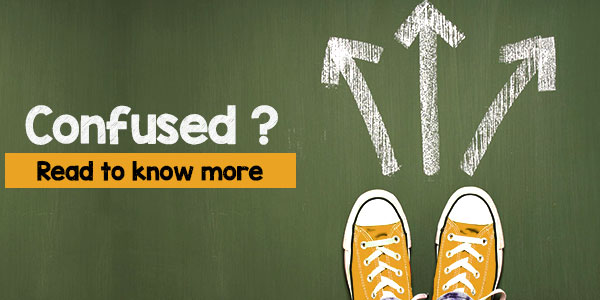If you are struggling with debt and wondering which debt relief option is best for you, then this post is for you. It would help you understand all the debt reduction methods and choose the best option to become debt free.
You must do your part of the research before selecting a debt reduction method for yourself or before reaching out to a debt relief company.
The list below contains 5 ways to become debt free:
- Debt consolidation
- Debt management
- Debt settlement
- Bankruptcy
- Do It Yourself (DIY) debt reduction
These five debt relief options are briefly discussed below. Everyone has different debt situations, which demand different debt relief options.
Here, you’ll get an insight into which debt relief method is good for your debt situation. So, choose an option carefully that suits your financial needs.
1. Debt consolidation
Debt consolidation combines multiple debts into single manageable monthly payments with lower interest rates.
You can use this option to get rid of credit card debt along with debts that are not related to assets. Since debt consolidation comes with lower interest rates, you would save money in the long run.
In a debt consolidation program, you consolidate and repay your debts through an easy and affordable payment plan offered by the consolidation company. Whereas, in the case of a debt consolidation loan, you take out a big loan to repay other smaller loans.
Debt consolidation is best for you when:
- You have high-interest rates on your debts
- You have high monthly debt payments
- You are confused because of too many bills
Why?
- Handle multiplication of unpaid debts: Interest rates on some types of debt are very high, especially credit cards - they can go up to 25% or more. Moreover, your debt can multiply faster before you could even pay it off.
- Avoid domino effect: If you have lots of debt and can’t pay the high minimum amount, it’ll lead to a domino effect. It means a chain reaction. For instance, if you miss payments, your interest rates will rise.
- Help manage multiple bills: Debt consolidation is good when you’re struggling to keep track of the due dates of your numerous bills. It reduces the number of payments into a single manageable one. Thus, helps you better concentrate on getting out of debt.
For more information:
- 7 Debt consolidation mistakes: Common traps which you should avoid
- 5 Mistakes which can prolong the debt consolidation process
2. Debt management
Debt management wipes out your unsecured debts by striking out a repayment plan with your creditors at lower interest rates.
If you enroll in a debt management plan or program (DMP) offered by debt management companies, counselors will contact your creditors and propose a repayment plan.
With the help of a debt management plan you’ll make regular monthly payments to the credit counseling agency, which then distributes it among your creditors.
Debt management is best for you when:
- You’re trying hard to make regular monthly payments
- You have ample debt accounts
- You want to come out of debt faster
- You want to eliminate penalties and waive fees
- You want to get rid of collection calls
Why?
- Lower interest rates: When you’re struggling to make regular monthly payments, opting for a debt management program is a good idea. Because it reduces your monthly debt payments by consolidating all your multiple unsecured debts at a lower rate of interest (usually between 6% to 10%).
- Easy management of debts: A debt management program is best when you’re struggling to keep up with several debts every month. It combines all your monthly payments including your unsecured debts (such a credit cards) into a single monthly payment, which you can afford. Debt management plan helps to manage your debts easily. Because here, you’ll have to make one payment on all your debts each month. Usually, you make this monthly payment to the debt management company or credit counseling agency, which then hands it over to your creditors and/or debt collectors.
- Elimination of penalties and fees: In a debt management program, your credit counselor negotiates with your creditors on your behalf and convince them to eliminate penalties and fees applied to your accounts due to missed or late payments.
- Relief from collection calls: Once you enroll in a debt management program, debt collectors may stop calling you.
3. Debt settlement
Debt settlement helps you to pay off your debts only if the creditors agree on the reduced balance.
In a debt settlement program, the settlement company negotiates with your creditors and reduces your payoff balance.
Debt settlement works best for you when:
- You have lots of unsecured debts
- You have high interests on loan amounts
- You have missed payments
Why?
- Reduces outstanding balance: Debt settlement is best for those who have loads of unsecured debts and bills as it reduces the outstanding debt balance.
- Repay debts faster: It’s best when you have an enormous balance on your credit cards and other unsecured debts.
Read more:
4. Bankruptcy
Bankruptcy gives relief to consumers and business by eliminating their overwhelming debts under the protection of the federal bankruptcy court. Though there are several chapters in bankruptcy, consumers use two of them widely, that is, Chapter 7 and Chapter 13 bankruptcies.
You must file for bankruptcy when:
- You have an enormous amount of debt
- You don’t have a stable income, that is, you’re out of work for a longer period
- You’re delinquent on taxes
- You’re dealing with wage garnishment
- Your lawsuits are awaiting due to delinquent bills
Why?
- No more collection calls: Bankruptcy puts a hold on the annoying collection calls of the creditors by putting an “automatic stay” upon them. Thus, no more harassing collection calls for you. It also prevents creditors from taking legal actions against you.
- A fresh start: It frees you from your huge debt obligations and it allows you to start fresh.
- Stops accumulation of interest rates: As soon as you file bankruptcy, the interest rates on your debts stop accumulating.
- No wage garnishments: You won’t face wage garnishments anymore.
- Protection of assets: Bankruptcy allows you to protect certain assets by using ‘bankruptcy exemptions'.
For more information:
- Bankruptcy - Check out what documents you need to provide
- Bankruptcy - 3 Less-known facts most people are unaware of
5. Do It Yourself (DIY) debt reduction
DIY debt reduction is when you try to repay the debts yourself without any professional help.
There are two commonly used approaches to DIY debt reduction - the snowball approach and the avalanche approach.
With the help of snowball method you start repaying debts from the smallest balance and head toward the largest balance, irrespective of the interest rates. Whereas, if you opt for the avalanche method, you’ve to pay back your debts from highest interest rate to lowest interest rate, regardless of the balance.
DIY debt reduction is a good idea when:
- You have a clear strategy for repaying your debts and are committed to sticking to it.
- You won’t gather new debts for the duration of the program.
- You have enough money to pay off your balances.
Why?
- No more fees: You won’t have to bear the professional fees of the debt relief companies.
- Improvement of credit score: Your credit score will improve with time, since you’re trying to repay your debts in full. Easy debt handling: It’s an easy method to become debt free, and you’ll also get free online tools to handle your debts.
- Best debt relief option: It’s a perfect option when you’re not ready for debt settlement, debt management, debt consolidation, or bankruptcy.
No matter which option you choose, always consult a financial expert before settling your debts. Remember, one wrong step of yours will take you deep down.
Know more:









